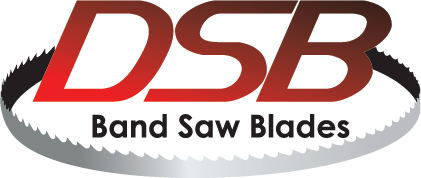Adopting these best practices helps keep your books accurate and up to date, which is critical for the success of any small business. So this amount is debited to your account and raises the account balance to $4500. Since this is an expense, you subtract this amount from your cash balance. Let’s assume you have a $5000 cash balance at the beginning of the first week in June.
- Overall, bookkeeping plays a vital role in the progress and performance of the business.
- Typically, credits increase revenue, liabilities, and owner equity, whereas debits increase assets and expenses.
- If you’re unsure which method suits your business, consider seeking professional advice.
- Switching would involve a more detailed recording process, capturing transactions in at least two accounts (as debits and credits).
Document revenue and expenses
The table’s last row should show the accounting period’s ending balance (at month-end or year-end, for example). Bookkeeping is an essential part of running your business, but it can also be one of the most labor-intensive aspects of business transactions. Small business owners need to understand this topic to ensure their company’s financial status and security are protected for the long term. Although people can be paranoid about online record keeping, however, when it comes down to it it is definitely the way to go and is less susceptible to error as opposed to single entry bookkeeping. When a business sells a good using single-entry accounting, the expenses for the good are recorded when the https://www.thefaaam.org/EffectiveAdvertising/evaluation-of-company-advertising-performance business purchases the good and the revenue is recorded when the business sells the good. The more sophisticated double-entry bookkeeping system addresses the more demanding needs of such businesses.
Adopting Single-Entry Bookkeeping
This method tracks the inflow and outflow of cash, simplifying the recording process significantly. Most businesses maintain a record of transactions using double-entry bookkeeping. However, many smaller businesses use single-entry books that record the “bare essentials.” In some cases, only records of cash, accounts receivable, accounts payable and taxes paid may be maintained. The disadvantage of single-entry bookkeeping is that it doesn’t include accounts like accounts receivable, accounts payable, and inventory.
Step 2: Organize Your Entries
Additionally, many accounting software options offer compatibility with other business tools, like invoicing and payroll services, creating an interconnected financial ecosystem. https://makeandmeaning.com/SpiritualPractices/nicolas-bioenergy As you can see, single and double-entry bookkeeping both have their uses, but most business owners find that one better suits their needs. Depending on your needs for simplicity, detail, and potential accounting insights, you may find a single-entry system works better for you—or vice versa. For example, if a business owner takes out a loan, this is recorded as income in the single-entry system. This transaction would also be recorded as a credit to Loan payable (which is a liability) and a debit to Cash in a double-entry system, so you’d better understand your cumulative bank debt.
How does the Single Entry Bookkeeping System work?
Typically used by small businesses and individuals who require simplicity, this system logs cash disbursements and cash receipts over a period. Single entry bookkeeping serves as a foundational system for many small businesses and individuals. While it offers simplicity and ease of use, it’s essential to recognize its limitations, especially when compared to the double-entry system.
- Understanding single-entry bookkeeping is all about focusing on the essentials.
- If there are any receivables or payables, then tracking the same will be severe in a single entry system as assets and liabilities are not captured.
- Single-entry accounting only tracks revenue and expenses, which makes it economical because there’s no need for expensive accounting software.
- Ensure you have recorded all your income and expenses accurately over the period you wish to report.
- Record this figure just below the income column as a ‘carry forward’ (c/f) amount.
You can detect errors more easily when https://www.heat-and-power.com/GasPrices/highest-gas-prices-in-us using double-entry accounting methods. Single-entry accounting has no system to detect errors since it only allows a single entry for each transaction. Single-entry accounting is a straightforward accounting procedure because you record one entry at a time. This means individuals with little or no accounting experience can typically perform it.
Single-entry bookkeeping systems are used because of their simplicity, while double-entry bookkeeping may require the services of a trained person. In this article, we define single-entry bookkeeping, provide its advantages and disadvantages, outline how it compares to double-entry bookkeeping, explain how to perform it and share an example. A business entity can record its monetary transactions either on Single Entry System or Double Entry System of Bookkeeping. The former is less laborious as well as less time consuming while the latter completely records the transactions which need substantial effort and time. There is no check for other accounts in this system, and they cannot be balanced.
Single-entry bookkeeping is often compared to that of a checkbook register or a simple financial statement. Single-entry and double-entry accounting are both methods of record-keeping for companies’ financial transaction data. Single-entry accounting records each transaction one single time, while double-entry accounting records each transaction twice, once as a debit and once as a credit. In single-entry bookkeeping, transactions such as sales and expenses are recorded as individual entries in a ledger. For example, a sale might be recorded as income, while an expense like office supplies is recorded as an expense. Each entry includes the date, description, amount, and category of the transaction, providing a basic overview of financial activities.
Wrapping Up: Choosing the Right Bookkeeping System
In a double-entry bookkeeping system, accounting transactions
